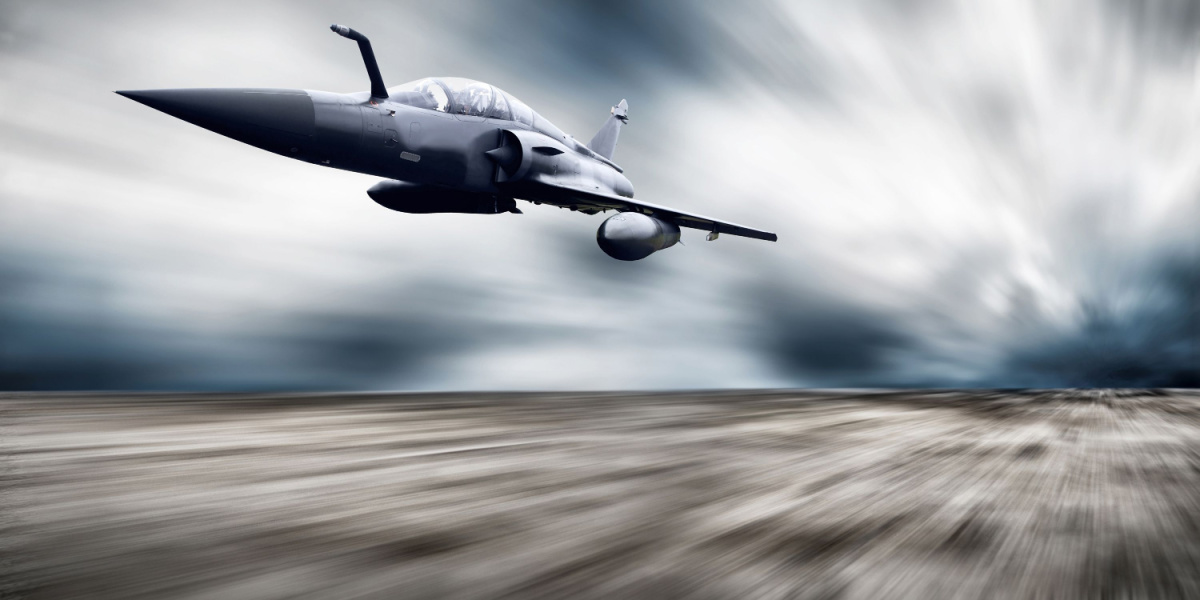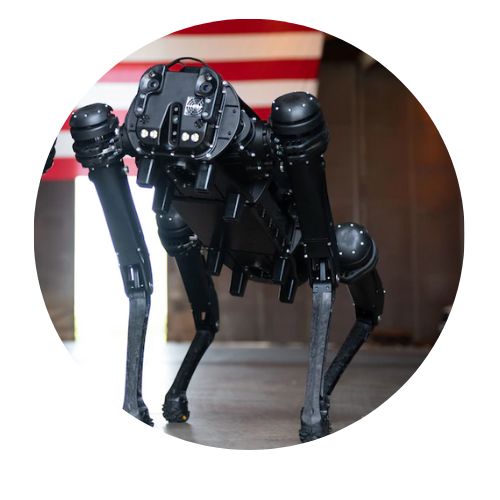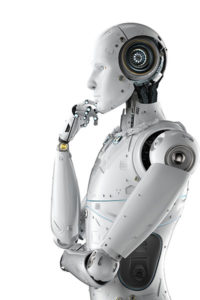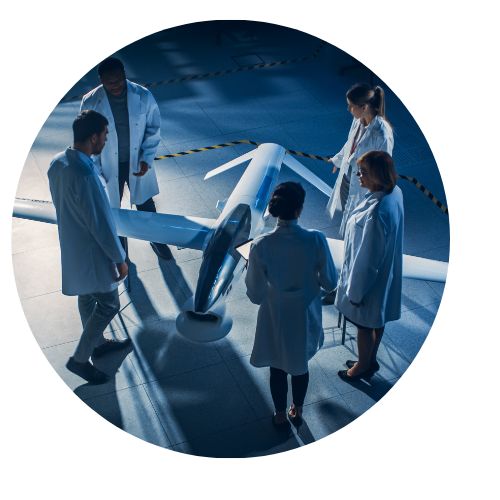
Global Race for Innovation
In the global race for innovation, industry leaders are speeding ahead in the engineering fields of satellites, rockets, robotics, drones, motorsports, and the future of mobility. It’s no longer enough to just keep the pace of your competitors. The objective is to outperform and outmaneuver, blazing the trail to new frontiers with faster, more cost-effective innovation solutions.
The Race to Space : Launch Collaboration
There’s no bigger frontier for growth than space, and it takes an incredible team to assemble a successful mission. Rocket Lab, together with General Atomics, NOAA, and France’s National Center for Space Studies, completed an 8th launch in October 2022 to deliver a satellite to collect crucial global data from thousands of transmitters. The analysis of this physical and biological data will help scientists better understand the planet’s climate and biodiversity, as well as assist with maritime security, pollution tracking, and humanitarian assistance.
You don’t have to be a rocket scientist to know it takes a unified, collaborative effort to achieve projects of this scale. Provide your team an innovation platform- a dedicated, secure solution for ideation, collaboration, and technology discovery, empowering quicker, better educated decisions and project workflow monitoring. Explore innovation white space and launch your innovation plan, navigating the journey with Ezassi software. Easily link communication among internal resources, private sector experts, government entities, and university contacts. Together these technical teams and stargazers will pioneer innovation through transformational technologies across the aerospace, communications, and defense industries.

Space is a rapidly evolving domain requiring accelerated thinking and tactical responsiveness to prevail. -Space Systems Command Writer, Senior Airman Samuel Becker
Release Innovative Ideas : Scout Robotics
Industry is rapidly adopting robotic automation for precision work in manufacturing, healthcare, and food production. It also replaces difficult, routine movements of human laborers with collaborative robots, or co-bots, working alongside people on the assembly line with machine efficiency, dexterity, and endurance. In some applications, co-bots provide heightened safety to their human colleagues in the workplace. Take for example the Ghost Robotics Quadruped Unmanned Ground Vehicles (Q-UGV) project, a military initiative replacing soldier surveillance rounds with robotic, dog-like scouts. These unmanned patrol vehicles enhance mission effectiveness through automated damage assessment, enhanced security, and the ability to work in dangerous environments through cutting edge multi directional, thermal, and infrared video capabilities which surpass the awareness and abilities of a human patrol.
In adjacent technologies, a research team from University of San Diego is working on improving mobility of four-legged robots. By creating a system that combines the input of data sensors on the legs working in unison with imaging from the head cameras, the animal inspired robot can more predictably travel safely on new terrain. This work may lead to scouting robots that can conduct surveillance in hazardous places or beneficial in disaster search and rescue missions.
It is certainly not surprising that Defense and Military sectors are leading in the innovation race in robotics. A software platform that connects researchers, governments, and private sector industries throughout the innovation process is a fundamental requirement for technical project management and IP protected technologies.


People are really good at adapting to different environments. But if robots could also change their shape, do different things … it gives you more possibilities. -Mark Yim, Director of University of Pennsylvania GRASP (General Robotics, Automation, Sensing & Perception) Lab
3D Printing Flying Drones
What are the possibilities when you merge the natural behaviors of a flying insect with the latest in robotics and 3D printing? A leading group of scientists and engineers, inspired by the building capabilities and intercommunication of bees and wasps, is focused on constructing intricate forms with a swarm of semi-autonomous 3D printing drones. One drone is tasked with scanning and surveying the area for building, then another printing drone is responsible for dispersing lightweight materials in a set blueprint using expandable foam or liquids which harden into a predetermined shape. This type of bioinspired aerial-aquatic robotics research is guided by the cross disciplines of many fields including mechanical design, robot mobility and manipulator engineering, AI sensors and the development of novel programming for operation.
Aerial printers like these can one day be used in remote or volatile areas, along hard to reach pipelines, or high up on the tallest structures. These inventions also show a great potential for environmental monitoring or assisting in a disaster response. Watch an interesting video about this disruptive technology here.
When researchers and organizations with varying technologies collaborate, monumental outcomes are achieved. What are you working to build in your innovation portfolio, and do you have the right tools to align your team in your vision? Ideation and collaboration, along with technology scouting for the discoveries impacting your industry, are all achievable with Ezassi.

(You) are likely to come in first only by having access to some knowledge or research methods the others do not have. - Herbert A. Simon, Nobel Prize laureate and AI pioneer
Fit to Fly : Innovating Sustainable Aerospace
Fuel inefficiency is a massive challenge the Aerospace and the Airline industries want to solve. To minimize its environmental footprint, this industry must continuously innovate and look to researchers and startups for inspiring new ideas in aircraft design. To build a stronger, faster plane that also burns less fuel, a major transition from metal to composite materials in construction is one method proposed. Through the expanding option of additive manufacturing, aircraft can be newly built or retrofitted to be lighter and stronger, reducing fleet-wide fuel usage while also boosting safety and sustainability goals. Take for example, ARRIS additive molding, which can create continuous fiber-optimized composite parts to replace existing titanium metal parts. ARRIS’s Additive Molding expertise partnering with the Aerospace industry ensures composite fibers superior in stiffness and strength with a decreased weight are the forward-thinking materials required for a nascent space travel industry. Ezassi has the technology scouting tools and consulting services to help companies identify the new technologies and startups that can strategically partner with you.

Now let’s examine fuel use when the aircraft isn’t even flying. In a recent study it was found that taxiing (the movement of an aircraft by its own power between the gate and its runway position) accounts for about 5% of total flight emissions. By implementing an Aircraft Towing System run on a systemized electric underground rail system, on average 1 ton of fuel during a 15 min taxi can be saved. This system is designed to fit most planes, including Boeing and Airbus models which make up 80% of commercial fleets, and if scaled across many flight providers and airport gates, will modernize airport facilities with sustainability and operating efficiency goals. This type of innovative technology greatly benefits airlines seeking a reduced carbon footprint and would also save in hundreds of millions of dollars in fuel costs. However, the infrastructure required for these changes also demands participation and collaboration between the municipalities, airports, and airlines. Disruptive changes to an industry like this can be managed more efficiently across its many players with one shared innovation management platform.
In an analysis of Ezassi software by a former NAVAIR consultant and innovation portfolio manager, it was found that our technology scouting platform, combined with the integration of a complete Innovation Resource Management system for open ideation and global collaboration, far exceeded results from traditional R&D department methods. Read additional details about exploring white space technologies in this previously published article.
Formula One Aerodynamics & Technologies
Formula One is also in the race for faster innovation. Worldwide partnerships with premier corporations are advancing sustainable fuel technologies, increasing electric capabilities, and improving tire manufacturing and performance in F1 racing. Unlike wings that give lift to flying aero planes, the physics behind the design of a Formula One racing car is based on aerodynamic downforce grip to maximize speed on turns while keeping the tires moving efficiently and firmly on the track. Collaborations with technology providers of simulation software and data analytics for key factors like aerodynamics are controlling the pace for future vehicle redesign and driver training. Precision engineering discoveries in competitive motor sports are also paving the way for new inventions that can be applied across a variety of industries such as health care, construction, and manufacturing. Get up to speed with racing technology by watching the F1 Grand Prix and consult with Ezassi on how these core technologies can possibly drive innovation in your organization.
Ezassi laps the competition on value with a suite of solutions to support your innovation strategy on the road ahead. Learn how to accelerate innovation from the front end to the back end to drive industry disruption.
In the Global Race for Innovation, where is your company positioned?
Technology discovery with Ezassi is the research that provides a framework for strategic investments, optimal partnership selection, and roadmap planning. Increase your pace of knowledge scouting and enable innovations that will compete on a global level.
If innovation is a race, you’ll have the resources ready for victory. Learn how our Innovation Management Software can launch your next great idea. Talk to an Innovation Program Expert for the Aerospace and Defense Industry.



